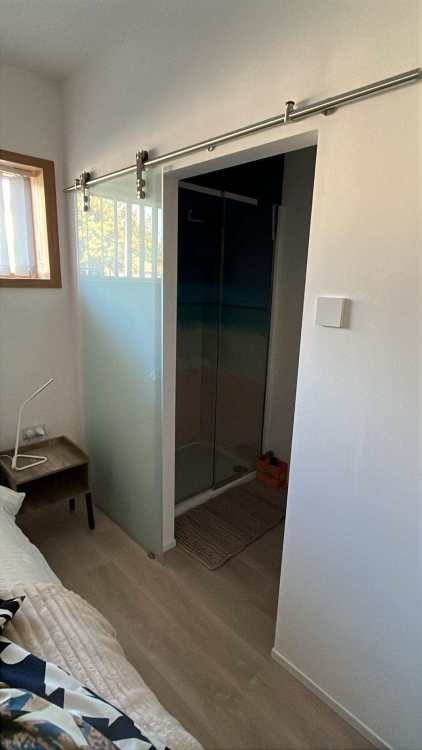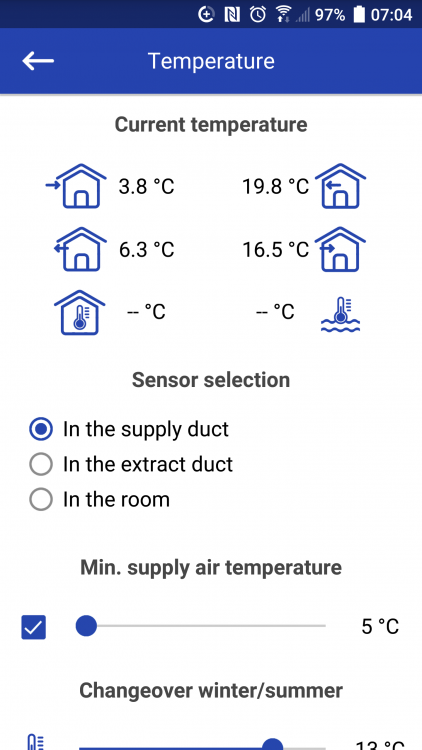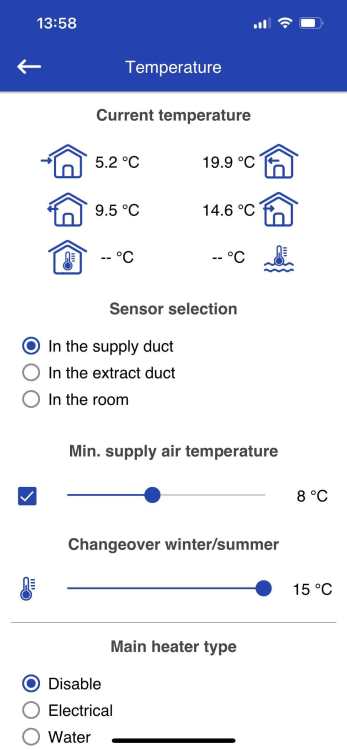-
Posts
261 -
Joined
-
Last visited
-
Days Won
6
Everything posted by Simon R
-
Yes, very frustrating, I've got 60m2 and that's it. Why they discontinue what is a run of the mill product is beyond me
-
Hi, our floor is doing well, no signs of fade even in areas exposed to lots of sun. The floor is laid tight to room edges with no expansion gap just a grid of tackifier to stop it moving . We bought it from Quadrant a commercial floor company and it's functionally equivalent to Amtico Access. I still have a good quantity of the flooring in the stuff for sale on BuildHub.
-
Seeking Advice on Strengthening a Pocket Door Wall (Eclisse System)
Simon R replied to finito's topic in Doors & Door Frames
An alternative you might consider using a glass sliding door surface mounted. It makes finishing a bit easier than a pocket and is much more robust . -
Insightful piece on more or less today.
Simon R replied to MikeSharp01's topic in Environmental Building Politics
Very true, but if you use as little as we do it's fine. Even at the higher rate of 22.6 it's broadly compatible with electricity cost and is more a convenient way of providing hot water.The average standing charge for gas is in the region of 30p per day so much more than the amount I'm billed for my gas usage. -
Insightful piece on more or less today.
Simon R replied to MikeSharp01's topic in Environmental Building Politics
OK, yes, A2A is a heat pump, it just differentiates it from the air to water kind. For hot water it's a gas combi boiler. Last year our gas consumption was 120 units so in the region of 1,320 kWh for showers baths and a little washing up. Fortunately Utilita have a tariff with no standing charge. -
Insightful piece on more or less today.
Simon R replied to MikeSharp01's topic in Environmental Building Politics
No heat pump but we do have a 2.5kWh A2A unit for heating and cooling. We run the house at 22C all year. -
Insightful piece on more or less today.
Simon R replied to MikeSharp01's topic in Environmental Building Politics
Yes, but given the time its going to take to upgrade the grid and do all the other work required for storage it's still worth 'acting local, thinking global' if you can afford it. With an 9.2kWh battery and 3.6kW inverter installation net consumption from the grid is just a megawatt since 10/2022 when the system was installed. Exports to the grid help reduce the need for gas generation....yes, piddling amounts but it helps. It's not all good as my solar will be exporting at times when other cheaper solar sources are available and I'll be drawing from the grid on cloudy days. Generation pricing is currently wrong and needs to be fixed basing it on gas pricing with the current generation mix is just wrong. -
Agree complete, using Bose cube or Cambridge Minx for the satellite speakers also means you can get them out of the way by wall mounting them. They're readily available second hand and give excellent sound.
-
So...I'm about to do Rainwater Harvesting
Simon R replied to mike2016's topic in Rainwater, Guttering & SuDS
Our tank was is 4600ltrs. Just the two of us and a small garden. Lots of washing though as we’re both sporty. -
So...I'm about to do Rainwater Harvesting
Simon R replied to mike2016's topic in Rainwater, Guttering & SuDS
The Kingspan system has a display showing tank level and options to customise auto fill from mains water. As I mentioned the pump had failed before first use and Kingspan wanted silly money just to send someone out. Our system now is very simple. A Divertron pump which switches on when it senses a pressure change in the system ie switching on a tap. No header tank. I also bought a cheap radio tank sensor which displays tank depth. In practice it’s pretty irrelevant and the tank has never run dry. -
So...I'm about to do Rainwater Harvesting
Simon R replied to mike2016's topic in Rainwater, Guttering & SuDS
Our rain water is still clear after 3 years use and is used for washing machine , toilets, window cleaning and garden watering. RWH was not on our original build plan, but a 19K quote to connect to surface water drainage made it a sensible option. After minimal research a Kingspan Klagster 4,600ltr system was purchased. The system included pump and controls for monitoring and maintaining the system. It got delivered and installed early in the build cycle, when we came to use it for the first time two years later the pump had failed. The Kingspan guarantee was 1 year from delivery and they wanted £300 just to look at the pump. Not impressed. To cut a long story short a call to Anglian pumps and some very good customer service the pump was replace with a Divertron pump. The pump is stainless steel and has a float intake, so it's always taking from the top surface of the the water. The pump also auto senses when an outlet is opened. Having ditched the complex Kingspan control system it's been running for three years without problem. I think having a good leaf filter and float intake are key factors in keeping the water clear. We're also fortunate that we don't get much debris in our gutters so silt build up is not a problem. Being able to clean our windows with a pole has been and unexpected bonus, not something you can do with tap water. With the benefit of hindsight I'd have bought a good tank with leaf filter and a decent pump, keep it simple, forget the fancy control system. -
First timers attempting an ICF and Oak Frame house in Devon
Simon R replied to MCoops's topic in Introduce Yourself
It looks as though you've found a lovely plot, good luck with your build Along with a couple of the other comments, building an oak frame within and ICF structure will add considerable cost and complexity. Like you my wife and I had some renovation experience, doing a build was a steep learning curve. With a lot of help from the folks on build hub we ended up building with ICF. It's worked out well for us, we used JUB ICF which is a little different from most ICF solutions as they cut all the blocks in the factory. A little more expensive but it reduces risk, for example all window opening are millimetre perfect. ICF isn't lego, construction is pretty straight forward, filling the walls with concrete is not and definitely requires an experienced contractor. We blogged our build on build hub and also added a thead on the ICF system we used. -
It looks as though the efficiency of my MVHR is diminishing and I've not a clue why so I thought where better to get some input than BuildHub. I'm running a Blauberg SB 550 unit which is possibly a little oversized for our build. When commissioned the air flow temperatures suggested I was getting pretty much 94%, today, three years later it looks as though its running at about 80%. The filters are clear(newly fitted), the heat exchanger core and internals of the unit and clean and indeed look like new. When commissioned the air entering the house was less than 3.3C colder than the air leaving the house. Now it's pretty much 5.3C cooler. That's a big enough difference to notice as a draft. The figures looks like it has to be the heat exchange unit unless I'm getting a lot more air into the house than is leaving it through the MVHR. Our build ACH of 0.6 was, testing the flows should let me know if this has changed. I've contacted Blauberg who made some suggestions about possible causes. Imbalanced flows, dirty filters, dirty heat exchanger etc. I also asked them if they monitored and kept efficiency data for the long term operation of their units, they don't (or won't share it?). I've added myself to the anemometer wait list so I can check flows and compare them to those at the time of commissioning, however as no settings have been changed I'd be surprised if it's a factor. There must be a good number of BuildHub members who have long term data of the efficiency of their MVHR systems heat exchangers. I'd like to know if others have seen a drop off and indeed if they haven't. Here is a copy of the heat exchanger washing instructions:Cleaning Poly brochure_EN.pdf
-
It depends on your budget and how much use they'll get. The main advantage for me was the lack of joints. Reco surfaces have an option to print your photo which gives pretty limitless options and it's not expensive. Here is a thread you may find useful:
-
I think we're both suffering a bit of confirmation bias, I could easily be wrong. The carbon intensity if the grid is not linear. The very times I'm using electricity are the times when the grid carbon intensity is at it's greatest. If having a battery helps smooth this great. I would love to think that if enough people had batteries it would prevent the firing of a gas turbine. Think local , act global. I'm not an expert, but I do care.
-
Yup, that's precisely what I find is the case. Energy generated and stored during the day is used to run the house to cook supper, watch TV, do the washing and make breakfast all done when the sun is not shining. Of 7MWh generated 4MWh went into the house and 3 got exported. Without a battery far more would have been exported as it is generated at times when we couldn't use it. Any residual left in my battery gets used to charge my EV leaving just 20% in the battery to get me through breakfast and into PV time. It's not perfect by any means but it helps.
-
I must confess I’m slightly intimidated when replying to your post….. I don’t think that any sane person would argue that the figures on atmospheric CO2 are just horrible. There are quite a few carbon sequestration options around but few are showing anything like the promise to be able to do the job, which is depressing in itself. Getting control of atmospheric CO2 is the biggest challenge facing humanity. Moving on….I’m trying to get my head around the figures. Google informs me our generating capacity is in the order of 101GW (2022 figure). Energy consumption total in the region of 1,729GW, so a factor of 17ish short when it comes to consumption. That’s a lot of additional generation capacity required and the goal of being oil free is a long way off. Housing accounts for something like 14% of the UK power consumption. Some 5% houses in the UK have PV installed, depending on what figures you take 50-65% are suitable for PV installation. If I could use my EV battery to buffer my use, it would be better than having a separate house battery. However the standards aren’t there and even if they were it would not be a universal solution. For me it’s the ‘ant pissing in the ocean’ approach, every little helps, even if it’s apparently inconsequential.
-
Well, it's true I'm considering PV input to the battery as carbon neutral. If I didn't store any electricity, any residual from local consumption would get exported, which all helps decarbonise the grid. If the grid was carbon neutral then there would indeed be no case for batteries. With a battery in place I use very little electricity from the grid and the times at which it gets used are typically outside the times when solar is being generated. If a battery was not available this would have to come from the grid with the associated carbon cost. In an ideal world it would be great if EV's were grid linked when plugged in and their batteries available as a supply/demand grid buffer. There are moves to make this a future possibility, but like all things it's more complex than it would at first seem.
-
While it's true that consuming is environmentally negative, investing to use less in the future is not environmentally negative. Without it we would not have solar or wind farms. Building to passive house standards consumes more resource, but pays back in reduced energy cost over the building life. Similarly running an EV is less damaging that running an IC over the life of the vehicle. Backup for the grid was not a consideration in my choice to install a battery.
-
It's a case of don't post when jet lagged.... My 7MWh figure is total from 28/10/2022 not this years PV generation which rather changes the figures. However it still does not take long for a battery to become carbon neutral which is the important issue.
-
I've just checked my battery discharge figures and I was including electricity directly from solar. The battery data shows a a discharge of 2.8mWh for the year so it's taken me around 14 months to become carbon neutral, still a very positive reason to have a battery.
-
Hopefully I can help. I'll start by admitting I'm in favour of home storage, so biased in my thinking. This is back of a fag packet stuff.... 1kWh requires 58kg of co2 1kWk generation 162g So it takes about 358kWh of battery use before they are carbon neutral. Our 4kWh solar installation generated 7mWh last year of which we used 4mWh the remaining 3 got exported. For our 9.2 kWh it took 533kg of co2 to manufacture (lithium phosphate so no cobalt) To be carbon neutral we need to use 3,293kWh (3.29mWh) of grid generated electricity at 162g/kWh Based on our usage of 4mWh we are already carbon neutral in the first year ignoring the 3mWh we export. So if you manage to use all of your PV generation you'll be carbon neutral even earlier! Yes, I've ignored the co2 associated with the inverter as you need one to manage any PV in the first pace. I think it's two years for a solar panel to be carbon neutral. Financially Back in December I posted on a thread on battery sizing. Our battery gives us an annual saving in the region of £1397 given my system outlay was 6.5K that's not such a bad return.Current data on lithium phosphate suggests they are going to last a long time, a 12 year unlimited charge/discharge warranty is not exceptional.
-
I just estimated based on room air volume requirement. The largest flow with no restrictor, then the others as a percentage of the largest flow ( I didn't use restrictors in any of the returns). Using pi r2 to calculate the rings to remove. This works out at approximately 70,55,36,19,16% which is a reasonable starting point. Having done this measure the flows with the room restrictors fully open. If the flow was too low then remove another ring to get to the right sort of volume +-20%. As changing each restrictor affects the pressure in the system you may need to repeat the process. I would not bother trying to be too exact, it really is a diminishing returns exercise I called quits when within 20%. Once you get to this point you can then adjust the MVHR fan speed to get the required flow in the room with the largest. The other rooms should also be correct at this point. After setting up this way I found that in practice I could run the MVHR at a lower fan speed and still have a comfortable environment (almost silent).
-
MVHR Design: Feedback & Mythbusting
Simon R replied to joshwk's topic in Mechanical Ventilation with Heat Recovery (MVHR)
I'd strongly urge you to take an in depth look at airtightness, it's fundamental if you want a draft free low energy house and needs to be designed in from the start. MVHR noise even with a loft installation should not be a problem, just a very low background hiss that you only hear when there is no other noise. Re-allergies, our kids and visitors lover our house during pollen season as they don't suffer with their hay fever.





